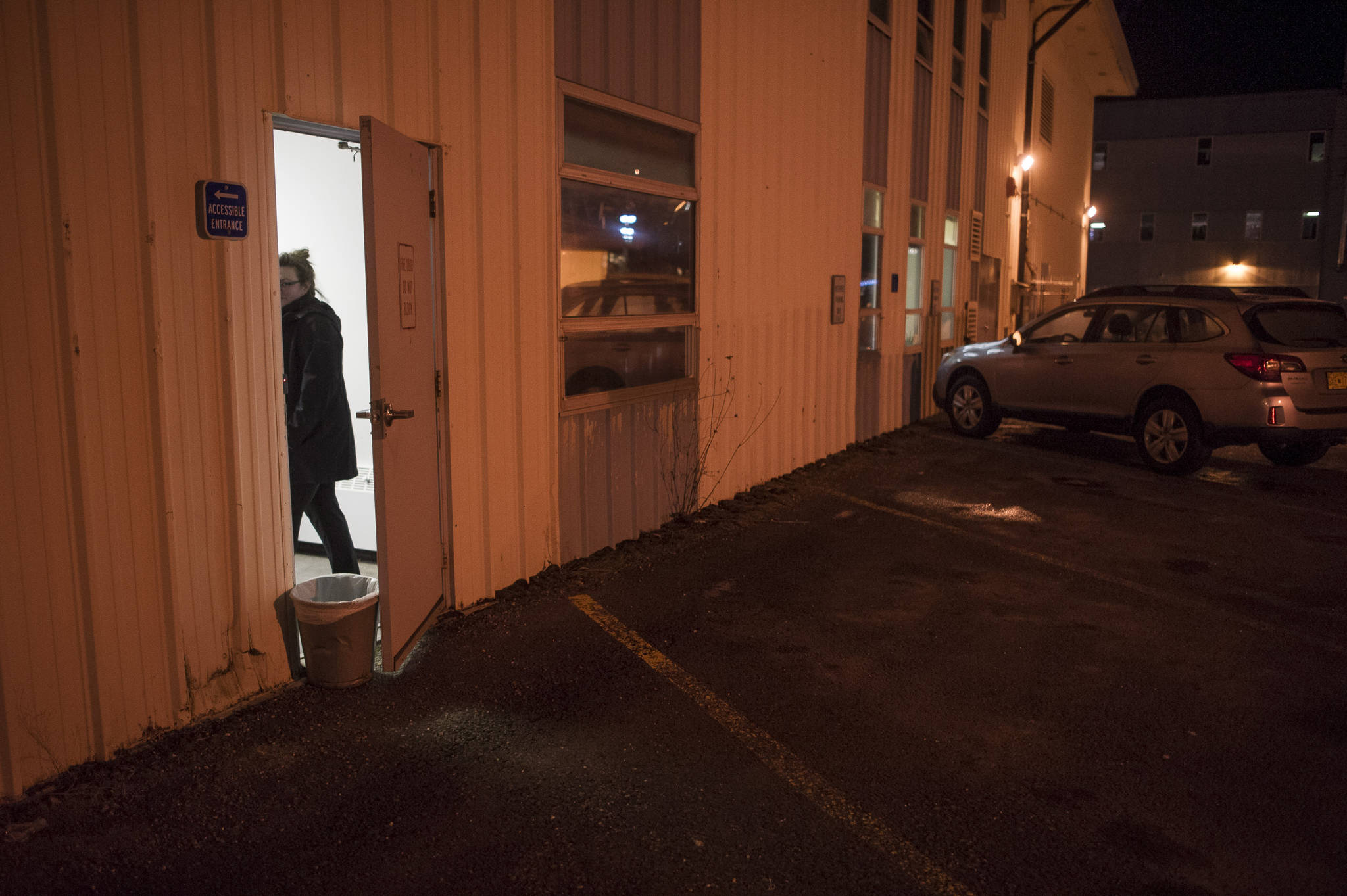As temperatures dip below freezing in Juneau, the City and Borough of Juneau’s emergency warming shelter will serve an important purpose to those trying to survive on the streets.
CBJ Housing Coordinator Scott Ciambor said at Monday night’s Assembly meeting that the shelter has already been a popular destination, as it’s averaged 18 patrons per night (it can accommodate up to 25) during its 17 nights of operation since the beginning of December.
The shelter is open on nights when the temperature dips below freezing, operating from 11:30 p.m. to 6:30 a.m. The cost of running the shelter for 100 days this winter is $75,000, mostly going to staffing, liability and rental costs. The Assembly approved the funds in a November meeting, and it ended up being located at the former Public Safety building on Whittier Street.
Ciambor called the shelter an “avenue of last resort” for those on the streets, as there are no other services provided at the shelter. Ciambor said that based on the feedback he’s gotten, the shelter has made a difference.
“One of the comments from our downtown police officer was, ‘This is a great service for the community because these are the typical folks that I see on my commute around downtown every morning,’” Ciambor said.
Ciambor and other city officials have said repeatedly that they realize the shelter is only a temporary solution. More permanent solutions include scattered-site housing, which is an approach where the city would work with local landlords and social services to get homeless people into housing around town.
Funding 10 of these units would cost $185,000 for the first year, according to research done by the CBJ Task Force on Homelessness in 2017. The Committee of the Whole voted in October to look into the possibility of scattered-site housing down the road.
Committee members agreed to wait until the city has filled its open Housing and Homeless Coordinator position. Ciambor said that 24 people have applied for the position, which was made possible with an Alaska Mental Health Trust Fund grant. The coordinator would work to connect local services for the homeless population and have them work together.
Updated number of homeless coming soon
According to numbers from early 2017, Juneau has the highest rate of homelessness of any city in the state. Those numbers will be updated from a count that will take place later this month, and Ciambor is hoping to see a major difference from last year.
A Point in Time Count — where people from various community organizations go around and count up how many people are living on the streets, in shelters or in transitional housing — released in April 2017, found that 215 people were in one of those three situations. One hundred were in transitional housing, 59 were unsheltered and 56 were in an emergency shelter.
This year’s Point in Time count will happen Jan. 24, Ciambor said. On the same day, the seventh annual Project Homeless Connect event will take place. At this event, those living on the streets can go to the Juneau Arts and Culture Center and get career advice, housing help, legal advice, dental services and more.
Ciambor hopes to see a tangible difference in the Point in Time numbers this year compared to last year.
“That 59 number is a huge number for a community of this size to be living either outside on the street or in a car or some other kind of precarious situation,” Ciambor said. “It’ll be really interesting to see this time around how we’ve done as a community since we’ve added a lot of resources.”
One of those resources is the Housing First Collaborative, which provides permanent housing and other services to 32 of Juneau’s most vulnerable residents.
Housing First opened at the beginning of September, and was filled to capacity within the next month. Assembly member Loren Jones asked Ciambor on Monday whether Housing First residents will show up in the Point in Time Count.
“That’s the intention, is that they won’t be counted at all,” Ciambor said. “They might come down and utilize the services of Project Homeless Connect, but as part of the data piece, those folks are permanently housed with an address.”
• Contact reporter Alex McCarthy at 523-2271 or alex.mccarthy@juneauempire.com. Follow him on Twitter at @akmccarthy.

